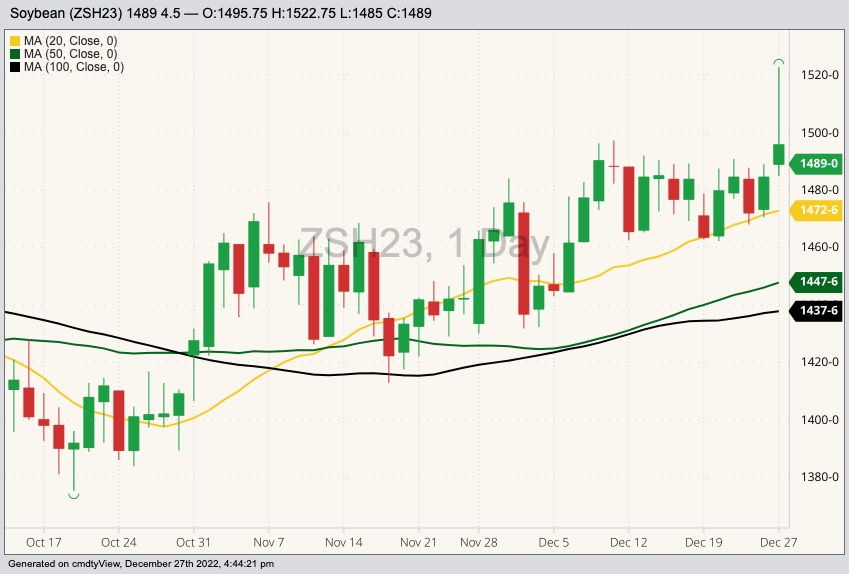Chicago | Reuters — Chicago soybean futures ended slightly higher on Tuesday after jumping to six-month highs earlier in the day, supported by continued dryness in major soymeal exporter Argentina.
Corn lifted after U.S. exporters reported a daily sale of 177,500 tonnes of corn for delivery to Japan, the U.S. Department of Agriculture said.
Wheat ended just below even after early gains, as farmers tried to assess damage to winter crops across the U.S. Great Plains.
The most-active soybean contract on the Chicago Board of Trade (CBOT) gained 4-1/2 cents to $14.89 a bushel, after climbing to $15.22-3/4, the highest for a most-active contract since June 23.
Read Also

U.S. livestock: Feeder cattle hit contract highs on tight supply
Chicago | Reuters – All Chicago Mercantile Exchange feeder cattle futures and most live cattle futures hit contract highs on…
The most-active CBOT wheat contract eased 1-1/2 cents to $7.74-1/2 a bushel, while corn firmed 8-1/2 cents to $6.74-3/4 a bushel, after reaching $6.75-3/4, the highest for a most-active contract since Nov. 8.
Soybean futures climbed after expected rainfall over the weekend in Argentina missed large portions of the parched growing region, analysts said.
“The forecasted weather in Argentina this last weekend was mostly a bust. It’s moving into a dry period now,” said Tom Fritz, commodity broker at EFG Group.
Soybeans also found support as China continues to list lockdown measures, announcing plans to begin issuing visas next week, though rising COVID-19 infections will likely slow any demand increases for soybeans.
Wheat remains underpinned by fears of crop damage from frigid temps, especially in parts of the U.S. Plains that lacked insulating snowcover on dormant winter wheat crops.
“We didn’t get the snowcover they were hoping for in a lot of areas,” said John Zanker, market analyst at Risk Management Commodities. “This crop was not in good shape when it went into one of the worst winterkill scenarios we’ve seen in quite some time. So my guess is, there was some winterkill.”
All three markets found support from weekly export inspections. Exporters readied 1.75 million tonnes of soybean for export the week ended Dec. 22, near the high end of analyst estimates ranging from 1.2 million to 1.86 million tonnes.
Corn export inspections of 856,606 tonnes were near the high end of trade expectations of 500,000 to 900,000 tonnes, while wheat inspections reached 280,554 tonnes, in line with predictions of 175,000 to 450,000 tonnes.
— Christopher Walljasper reports on agriculture and ag commodities for Reuters from Chicago.

















